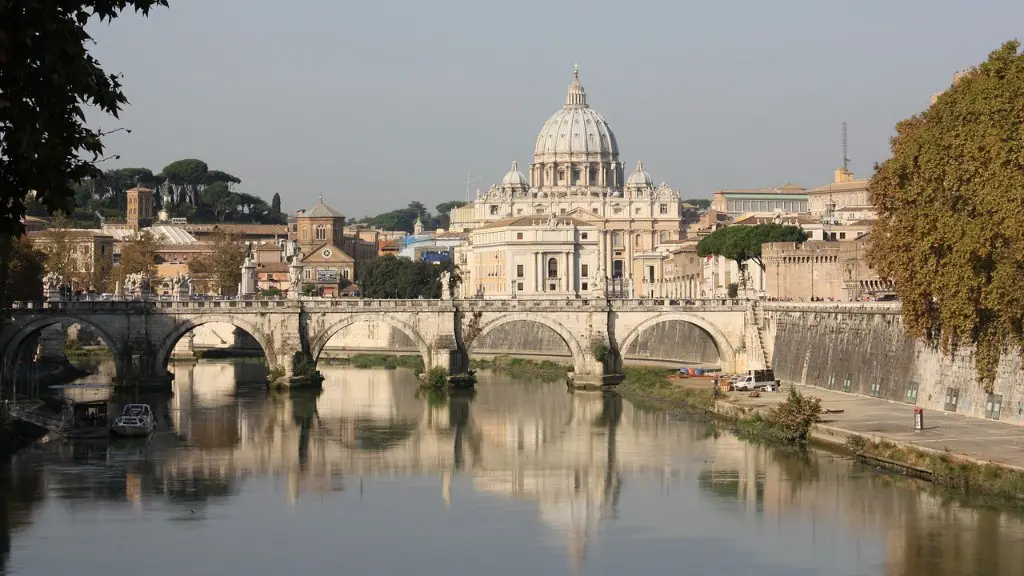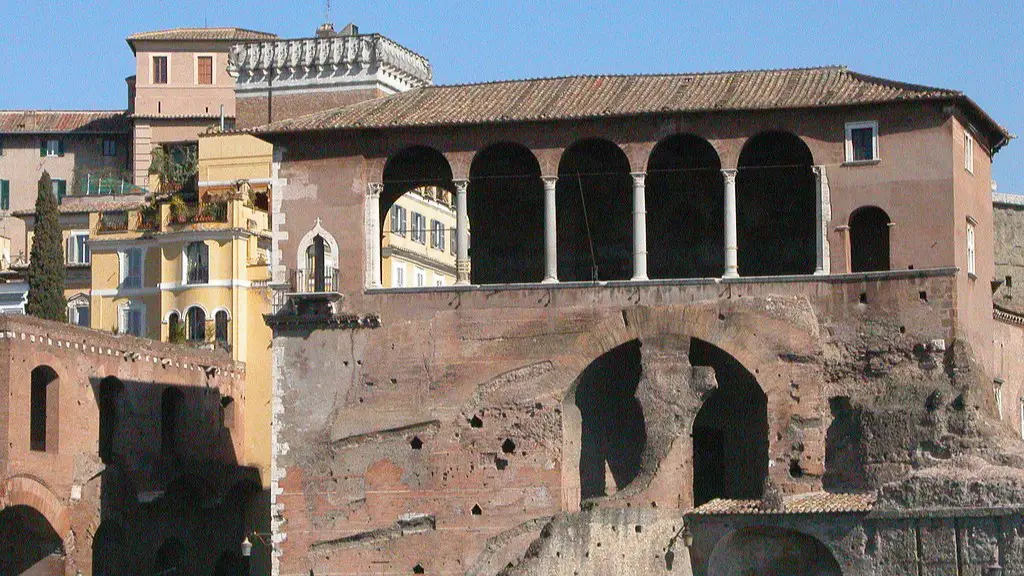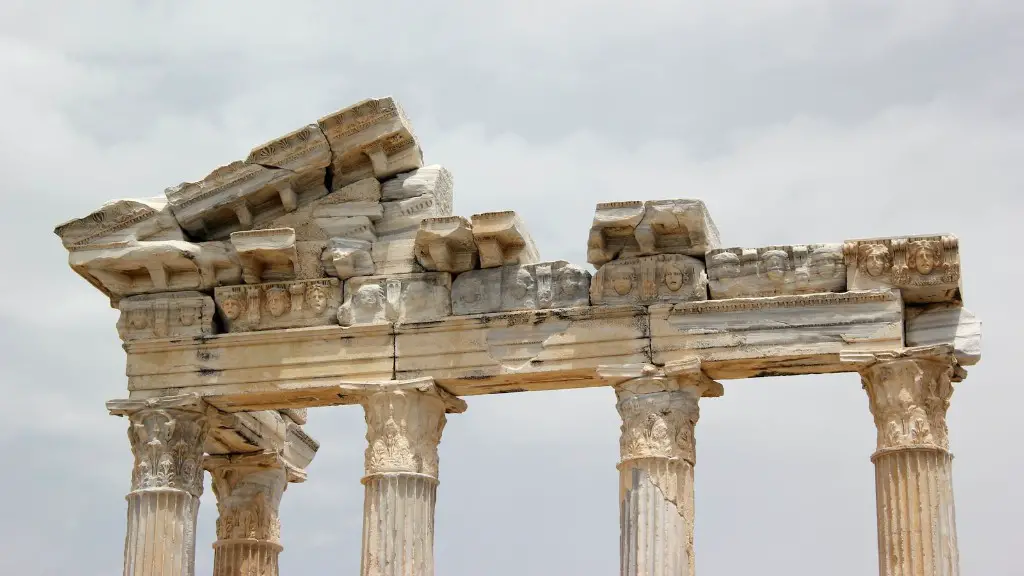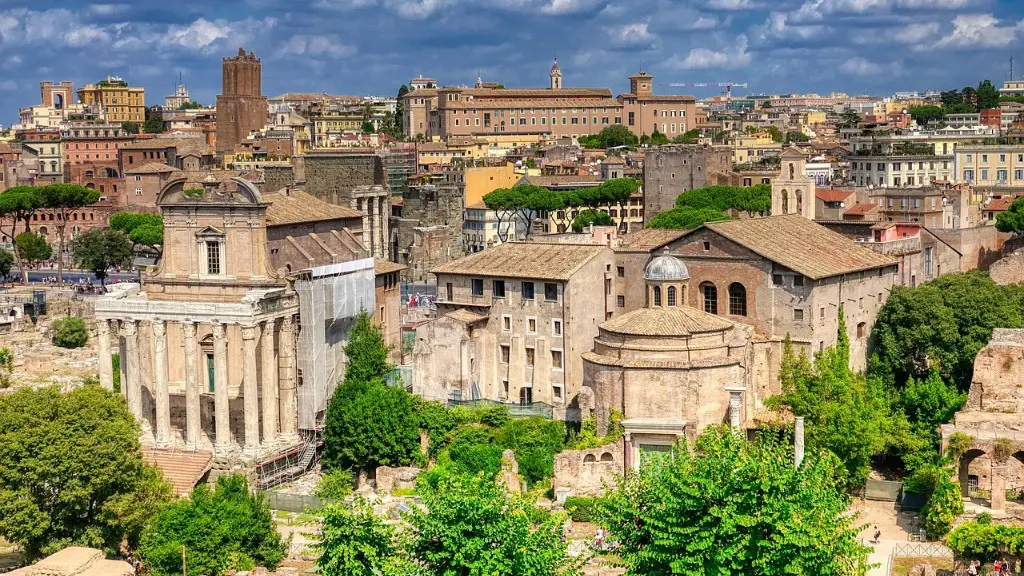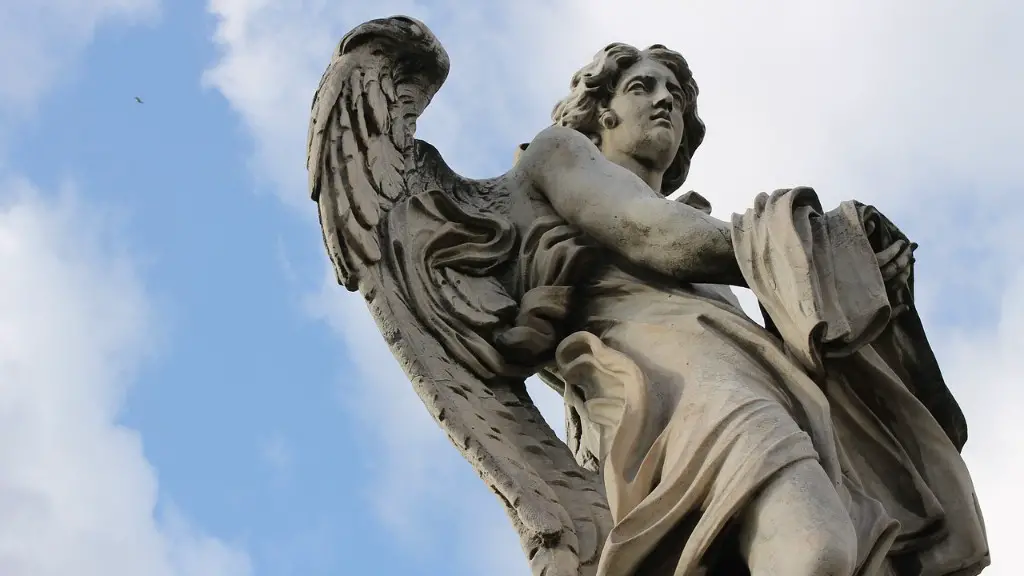Ancient Rome is renowned for its incredible wealth and intricate infrastructure, and its religious practices were no exception. In a time when worship took many forms, temples and churches dominated the landscape of the world’s most famous city. From the end of the Republic to the height of the Empire, Roman churches would have a marked influence on Christianity as we know it today.
Arguably, the earliest form of ‘church’ in ancient Rome would have been the templum, a sacred open air space devoted to Roman deities. Smaller than the great temples such as the Pantheon, it was here that sacred rituals were performed and tributes paid to the gods. Later, as Christianity began to extend its influence, the traditional temple began to be replaced with places of worship more immediately resonant with the faith. By the Middle Ages, Christianity was prominent throughout Rome and churches proliferated in the city.
Roman churches of the Middle Ages differed substantially from the lavish places of worship we see today. Without the financial support of the Catholic Church, they were often quite small affairs, more akin to an old chapel than a grand cathedral. The floors were usually of stone, dirt, wood or a mixture of the three, and in many cases, there weren’t any elaborate decorations or carvings to be found. Furthermore, churches from this era would have been rather plain in terms of architecture, featuring simple barrel vaults or groin vaults as a roof instead of the pointed arches and ribbed vaults used in later Gothic styles.
Obviously, the lack of material resources didn’t restrict the worship practices of the ancient Romans. In fact, they were known to take their faith seriously, and participating in Christian services was considered an act of piety. This could be done in a variety of ways. The most common practice was to gather in a Roman church to pray, sing hymns and listen reverently to the liturgy. Additionally, it was not uncommon for the church to offer a fellowship meal, or for a special rite known as a Panegyrist to be convened in honor of a particular saint or religious leader.
Arguably, one of the most essential elements of Roman churches was their artwork. While the physical structures may have been modest, many of the paintings, frescoes, carvings and mosaics have endured over time. This artistry was used to highlight religious stories and important figures, while also serving as an advertisement of sorts for the religion itself. Much of the art that remains today is an indicator of the prosperity of Christian worship in ancient Rome.
Overall, ancient Roman churches were significantly different from their modern counterparts. Although they were typically small and often lacked decorations, they were places of great veneration and deep attachment to religion. As Christianity began to take hold, the character of the churches changed and so, too, did their purpose. From the beginning of the Roman Empire to the Middle Ages, Roman churches had a profound impact on the history of Christianity, and this influence continues to this day.
Christians Persecution in Ancient Rome
From the outset of Christianity, it faced opposition from Roman officials who saw it as a threat to their authority. This was especially true under the reign of Emperor Nero, who was an ardent pagan, and who generally viewed Christianity as a ‘strange superstition.’ He would frequently persecute Christians, and in some cases, even resort to cruel punishments such as crucifixion and scourging.
The official stance of the Roman Empire towards Christianity would remain largely the same until 260 AD, when the Edict of Milan was issued by Constantine I and Licinius, guaranteeing religious tolerance to Christians. While this allowed Christians to practice their faith with more freedom than before, they were still often met with open hostility and discrimination by some members of the ruling class.
In addition to official persecution, Christians were often the subject of superstition and gossip by their fellow Romans. This was usually done without malice, but it nevertheless had the effect of making life very difficult for many believers. On more than one occasion, Christians were even accused of performing ‘magic rituals’ and other such activities, and were occasionally even executed on these grounds.
Christianity Spread in Ancient Rome
Christianity’s rapid spread in ancient Rome is a testament to the power and attraction of the faith. It went from being a marginal sect of Judaism to becoming a major world religion in less than a century. This transformation was largely due to the willingness of Christians to spread the gospel message and its key teaching to people from all walks of life.
The number of individuals who accepted Christianity increased rapidly, and by the year 313AD, it was estimated that there were over two million converts. This growth was largely due to the efforts of early Christian missioners, who traveled far and wide to reach out to those in need of hearing the good news.
In addition to the tireless work of the early Church’s missionaries, Rome’s cosmopolitan and ever-expanding population also provided fertile ground for the growth of the faith. With people from various countries, cultures and traditions coming into contact with one another, Christianity soon found a place in the hearts of many.
In fact, it is even said that some ancient Roman emperors became Christians, such as Constantine I who issued the Edict of Milan. This had the effect of protect Christians from persecution, and from then on, Christianity began to be seen not just as an alternative religion but as a universal faith. This would be a key factor in its eventual domination of the Roman Empire.
Roman Church Architecture
Christian churches in ancient Rome were typically built with a basilica plan, a design which originated in the classical world and was often used for civic buildings. Inside the church there was typically a central nave and two side aisles, with the apse located at the east end. The walls and ceilings were usually painted, with colorful mosaics adorning the floors.
In addition to their obvious religious significance, churches were often built as public works, with their imposing stature and aesthetic appeal enhancing the reputation of the city and its rulers. This is best demonstrated by the Church of St John Lateran, which was built during the reign of Constantine I in 312AD. This church was intended to be an expression of the grandeur of Rome and its new Christian faith, and it had a powerful impact on both the Roman and Christian worlds.
While much of the architecture of Roman churches has been lost to the ages, the concepts and ideas behind them remain as relevant as ever. This is particularly true in regards to the use of public works to serve as powerful symbols of faith and devotion. While the churches of today may look vastly different, they often share many similarities with those of the past, with their grandeur and magnificence serving to demonstrate the power of Christianity.
Religious Practices in Roman Churches
The religious practices of ancient Rome’s Christians largely mirror those of modern Christianity. The main difference is that, in the early period there was an emphasis on ritual and tradition. This involved ceremonial activities such as processions, vestments, and acts of veneration. There was an emphasis on order and solemnity, which was often perceived as essential for a successful spiritual experience.
At the heart of nearly all Christian worship in ancient Rome was the Eucharist. This was a communal meal in which the body and blood of Christ was shared among worshippers. It was considered to be a sacred and mysterious act, with bread being broken and wine shared. This ritual was seen as important because it was believed to be a corporeal demonstration of the presence of God.
Additionally, baptism was an important rite in early Christianity, with candidates having to undergo a period of fasting and penance before the ceremony. Adults wishing to be baptized had to examine their individual consciences and repent of their sins before being allowed to renounce their old life and receive a new identity.
Overall, ancient Roman churches provided an uniquely spiritual atmosphere in which fervent worshippers could express their faith. While worship practices were often quite orthodox, they were nevertheless filled with a great deal of spirituality and emotion. Even today, the same rituals and practices continue to be observed in Christian churches throughout the world.
Legacy of Roman Churches
The legacy of Roman churches is one that continues to be felt in the modern era. As Christianity expanded throughout the Roman Empire and its faith spread across Europe, the churches of Rome served as a template for future Christian architecture. This is best seen in the basilica plan, which is the basis for the design of countless churches in the West and around the world.
The artwork of the Roman churches has also had a profound impact. It was here that artists, such as Michelangelo, Raphael and da Vinci, began to express their religious visions through sculpture, frescoes, painting and mosaics. This artistry has become an integral part of modern Christian iconography, and it continues to serve as powerful reminders of the faith’s Roman past.
Finally, the existence of Roman churches provided an important lifeline for the early Church in a time when the faith was still in its infancy. It was through these places of worship that the message of Christianity’s salvation could be passed from one generation to the next, and eventually, it was this message that would prove integral to the religion’s ongoing success.
